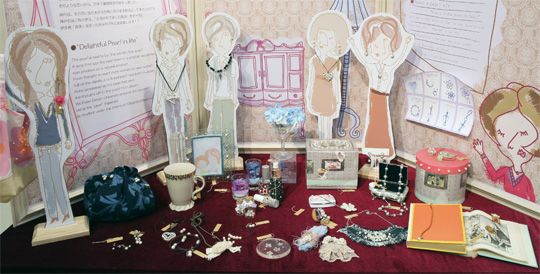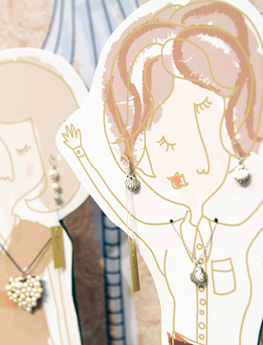

The pearl is said to be the world’s oldest gem. Long ago pearls found by chance in oysters were highly prized as natural products. Looking back at history, Cleopatra and Yang Gui-fei, famous as celestial beauties, are said to have routinely used pearls as medicine to preserve their beauty, and Qin Shi Huang-Di is said to have searched for pearls to obtain immortality. In Japan, pearls appeared in the Manyoshu (“Collection of Ten Thousand Leaves”) poetry collection, and some of the imperial treasures housed in Shosoin are decorated with pearls. Although pearls were once considered expensive, Kokichi Mikimoto wanted more women to wear these softly luminous gems. This was his motivation to start research on pearl cultivation, which led to the creation of completely spherical cultured pearls in 1907. Meanwhile, in Kobe, an international trading port since its opening in the Meiji era, Nihon Shinju Kaikan (Japan Pearl Center) was constructed in a former foreign settlement in 1952, and it flourished as a base for exporting high-quality Akoya pearls to the rest of the world. As a team of students with flexible views and creative minds at Kobe Design University, we propose a plan for souvenirs made with pearls, with the aim of bringing joy into people’s lives and further advancing the long-established pearl industry.
Kobe Design University: Sadako Mitera and Chiharu Morishita
In this project, we proposed a plan for souvenirs that would utilize our fresh eyes by merging the local industry of Japanese origin (i.e., pearl cultivation) and the sensitivity of university students. Our students tackled their assignments with a proactive attitude, visiting firms, improving their works repeatedly, decorating spaces with their illustrations, and putting their heads together to determine display plans. For them, the pearl was “something that makes them feel gorgeous in their daily lives.” Later, they made their presentation in Nagoya, and after that, various opinions emerged until the time of the presentation in Kobe, including radical ideas such as holding a fashion show.
We owe much inspiration to the exchange with other universities and presentation sessions, and it is very significant that we have become motivated to let others know what we think. The special award that we have received also makes us confident and fuels our motivation to move forward.
Inter-university exchange projects like this serve to widen the perspectives of students and increase their motivation. We hope that another project like this will be launched in the future. Thank you.